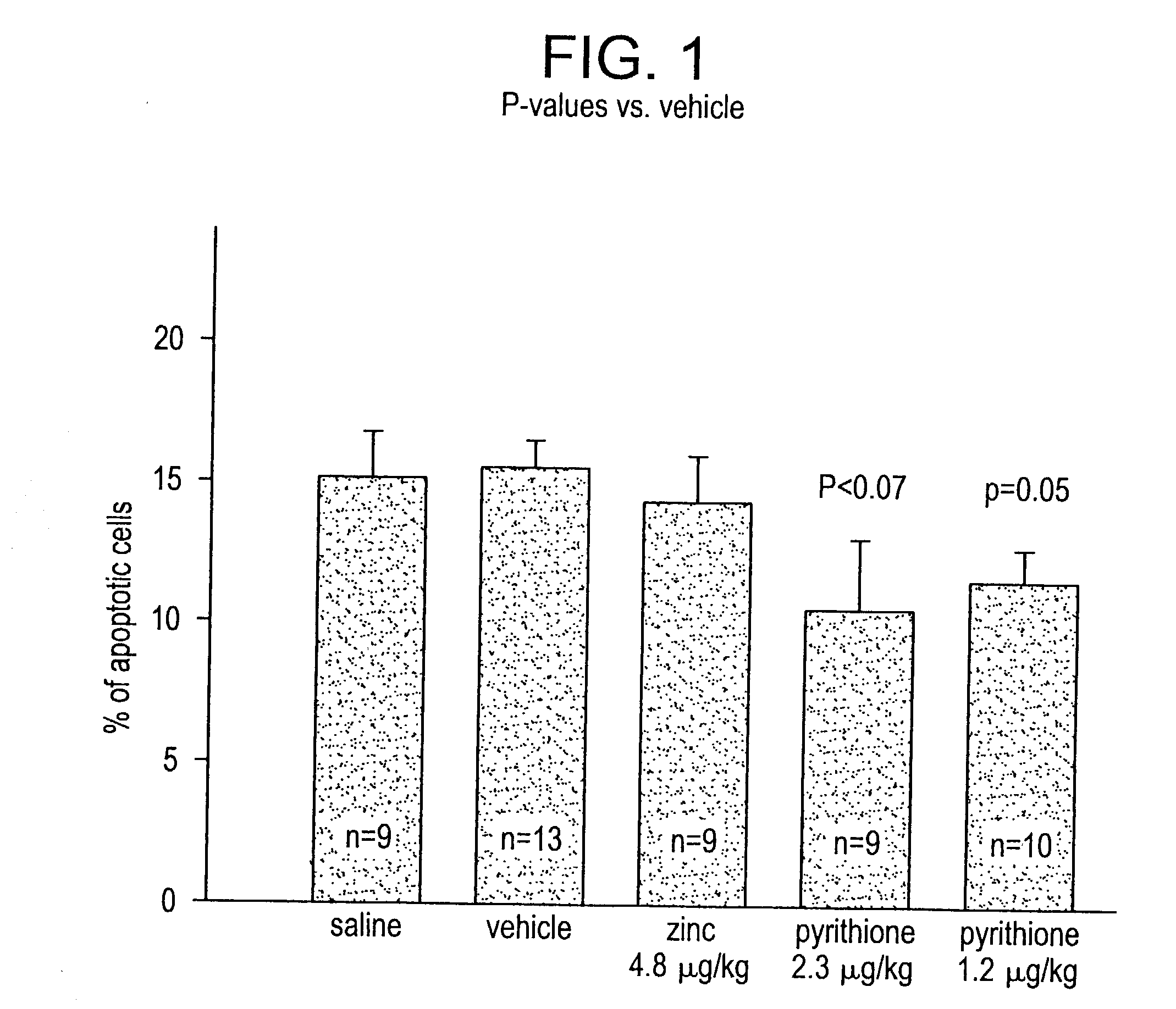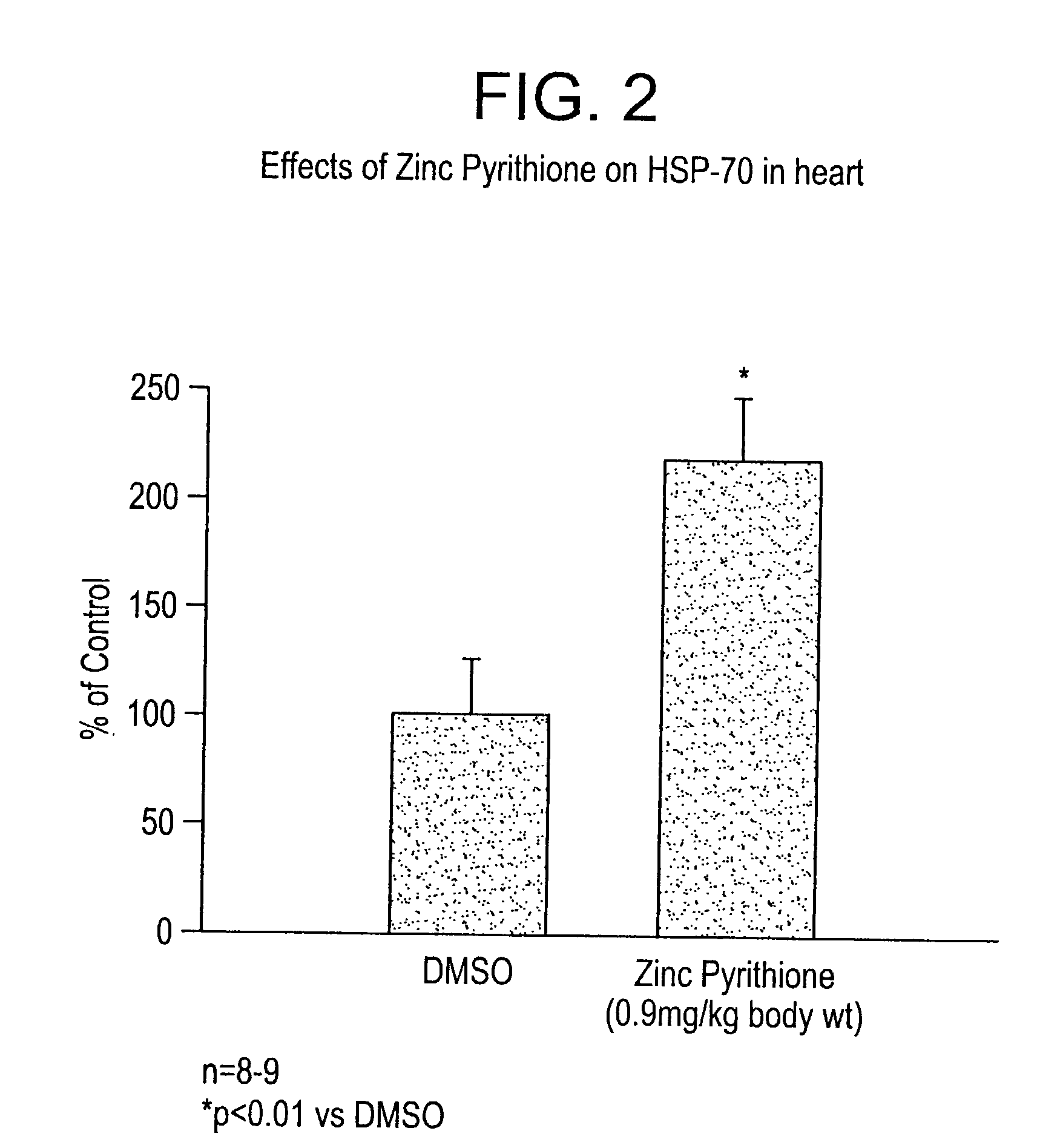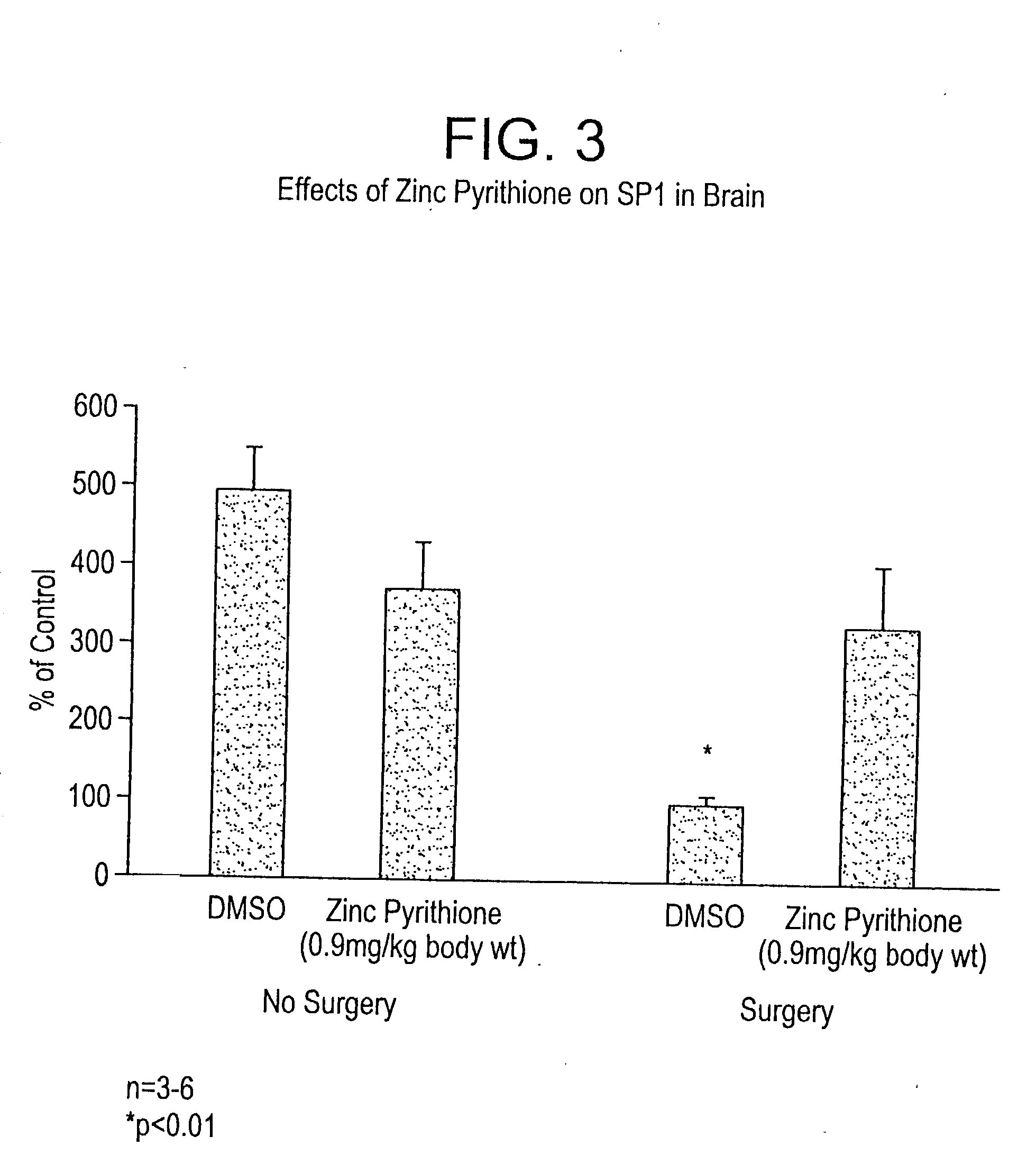Zinc ionophores as therapeutic agents
a technology of zinc ionophore and therapeutic agent, which is applied in the field of zinc ionophore as therapeutic agent, can solve the problems of zinc's anti-apoptotic mechanism being more complex, the full nature of this involvement is not fully understood, and no studies have demonstrated the efficacy of zinc, so as to prevent inactivation and facilitate syringability
- Summary
- Abstract
- Description
- Claims
- Application Information
AI Technical Summary
Benefits of technology
Problems solved by technology
Method used
Image
Examples
example 1
[0065] Screening for Ionophores:
[0066] Cell Cultures:
[0067] Human umbilical vein endothelial cells (HUVEC) were purchased from Clonetics (San Diego, Calif.) and passages 2-4 were used for these studies. Cells were cultured on flame-sterilzed glass coverslips in Endothelial Basal Medium (Clonetics) supplemented with 10 ng / ml human recombinant epidermal growth factor, 1.0 ug / ml hydrocortisone, 50 ug / ml gentamicin, 50 ng / ml amphotetericin B, 12 ug / ml bovine brain extract and 2% v / v fetal bovine serum (all from Clonetics), in a humidified chamber at 37.degree. C. and 5% CO.sub.2. To maintain cell populations, proliferating HUVEC were passaged at 80-90% confluency.
[0068] Cardiac myocytes were isolated from the ventricular septum of adult rabbit hearts, following collagenase digestion, in a manner similar to that described previously (Turan, B. et al., (1997) Am. J. Physiol. 272:H2095-H2106). The modification consisted of introducing low concentrations of CaCl.sub.2 during the perfusion w...
example 2
[0075] In vivo Heart Model--Ischemic Injury.
[0076] Experimental model: This model was designed to simulate myocardial infarcts in rats. The protocol is a modification of one described in detail previously (Fliss, H. et al., (1996) Circ.Res. 79:949-956, incorporated herein by reference). Male Sprague-Dawley rats (250-350 g) were anesthetized, the chest was opened, a ligature was passed under the coronary artery and was then fashioned into a snare. The coronary artery was then occluded for a period of 45 minutes by tightening the snare, at which point the snare was released and the ischemic myocardium was reperfused. Following four hours of reperfusion the snare was re-tightened and the area-at-risk was delineated by intraveneous injection of the dye Evans blue. The rats were then killed immediately and the area-at-risk was collected for analysis.
[0077] Previous studies have demonstrated that this model produces extensive myocardial apoptosis (Fliss, H. (1996), supra). To examine the ...
example 3
[0083] In Vivo Brain Model--Kainic Acid Injury.
[0084] Glutamate is the principal excitatory neurotransmitter in the brain, and plays a critical role in the etiology of different major brain pathologies such as cerebral ischemia, neurodegeneration, epilepsy, etc (Coyle, J. T. (1993) Science 262:689-695). Compounds which interact with the glutamate receptors are therefore important tools in the investigation of these diseases. Kainate is an excitotoxic glutamate analog that produces excessive neuronal excitation and seizures within hours following its intraperitoneal injection into adult rats. At 2-3 days after treatment, neurodegeneration can be observed in the limbic system in the form of apoptosis (Gillardon, F., et al., (1995) Neurosci.Lett. 192:85-88). Because the hippocampal subregions in the rat, particularly the CA3, are enriched in kainate receptors, they are particularly susceptible to kainate-induced neuronal death (Meldrum, B. S. (1994) Neurology 44:S14-S23). The neurotoxi...
PUM
| Property | Measurement | Unit |
|---|---|---|
| period of time | aaaaa | aaaaa |
| flow rate | aaaaa | aaaaa |
| pH | aaaaa | aaaaa |
Abstract
Description
Claims
Application Information
 Login to View More
Login to View More - R&D
- Intellectual Property
- Life Sciences
- Materials
- Tech Scout
- Unparalleled Data Quality
- Higher Quality Content
- 60% Fewer Hallucinations
Browse by: Latest US Patents, China's latest patents, Technical Efficacy Thesaurus, Application Domain, Technology Topic, Popular Technical Reports.
© 2025 PatSnap. All rights reserved.Legal|Privacy policy|Modern Slavery Act Transparency Statement|Sitemap|About US| Contact US: help@patsnap.com



